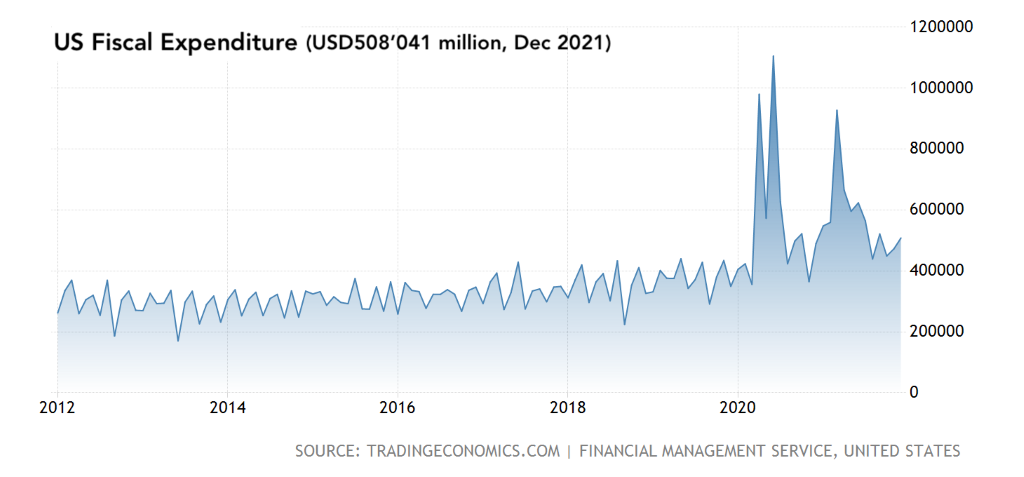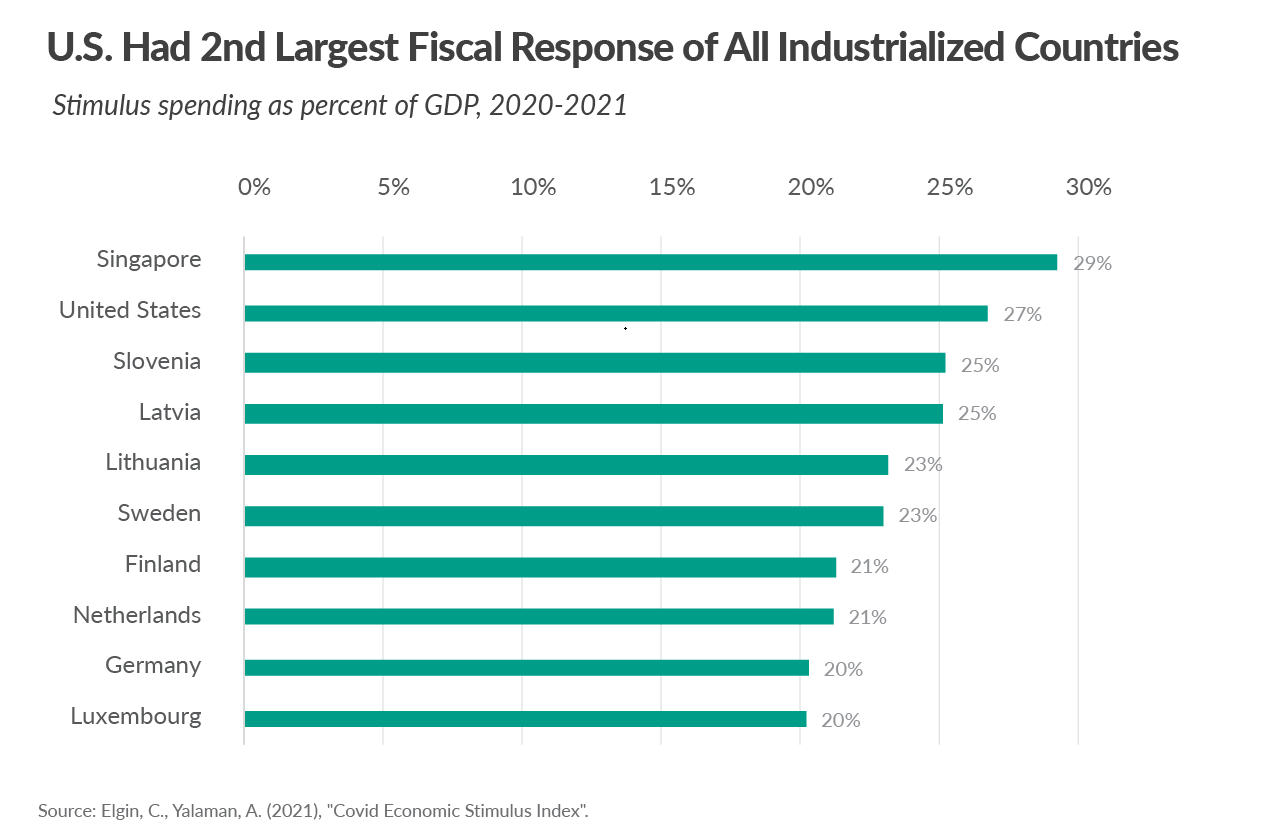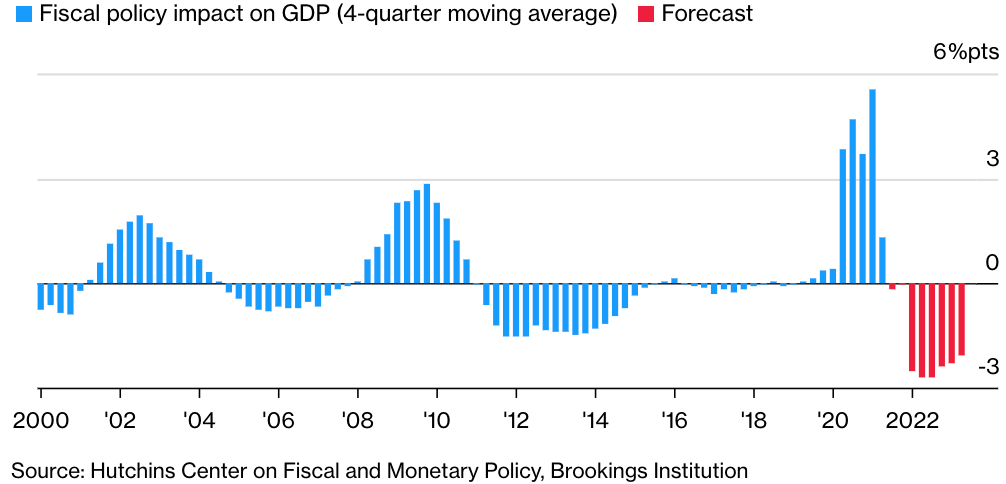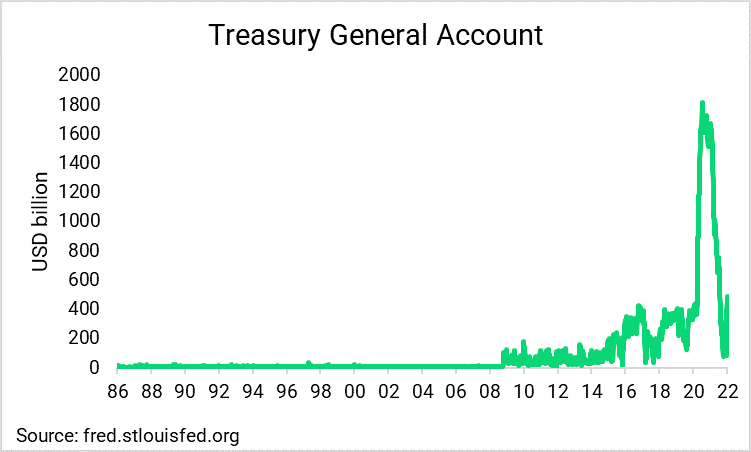Risk assets have been rocked by the prospects of tighter monetary policy, but is the risk of a fiscal cliff just as big – or bigger?
Covid lockdowns and economic disruptions led to the largest fiscal packages in history, an aggregate of USD6 trillion in US government spending alone. However, President Biden’s landmark social infrastructure bill – Build Back Better (BBB) – has faced nearly insurmountable challenges. This has added to stimulus withdrawal fears and market volatility. Today, many analysts expect some sort of an agreement on BBB, but uncertainty remains over its size.

Finding a middle ground
The Senate has been trying to reach an agreement on Build Back Better for months but has so far not managed the 51 votes necessary to pass the bill. In its current form, BBB is judged expensive, misleading, and not appropriate given that the US economy is back to pre-pandemic levels and inflation is running at decades highs. Nonetheless, a compromise is still possible, to address some urgent needs, in particular for climate. Meanwhile, any new bill is likely to be much smaller than initial plan.
Time is pressing for Democrats as they seek to boost their fortunes in the midterm elections. Biden’s low approval ratings are adding to the administration’s desire to pass a (any) version of BBB as quickly as possible. Therefore, one can assume some compromise among progressive and moderate Democrats (no Republican will vote for the bill). As such, the US Senate could, at the very least, pass a climate bill (USD500 billion) plus some auxiliary provisions, for a total number around USD1 trillion.
Impact on markets
Among industrialized nations, the US had the second largest fiscal response, 27% of US GDP. While Europe was offering assistance in the form of loans, the US was granting direct cash assistance to Americans. This helped the US stock market outperform other regions and might have also contributed to higher inflation.

However, economic growth is expected to slow in the second half of 2022 as stimulus effects and reopening pent-up demand gradually fade.

So far, fiscal policy is set to remain expansionary in the near term. Still, even if the Senate passes BBB, the fiscal shift compared 2021 will still be significant. BBB is expected to be rolled out over a decade and the yearly contribution to the economy is far below the fiscal injections of the past two years, even including the USD1 trillion bipartisan infrastructure package.
“The tailwind from fiscal policy is now beginning to turn into a headwind that is going to blow very hard by spring” commented Moody’s chief economist.

The good news is that this will likely cool inflation. Seeing inflation closer to 2% would give the Fed sufficient reason for a more neutral stance and prevent overly tight liquidity conditions.
Twin cliffs
In short, stocks are facing both monetary and fiscal cliffs in 2022. The upcoming year will see one of the largest contractions in the federal government's budget balance, even if Biden gets the additional spending he wants. If some form of BBB passes, it would help alleviate fears over a fiscal cliff, though growth is likely to slow from its reopening bounce throughout the year. Conversely, slower growth implies less need for aggressive Fed tightening, which should be supportive for stocks – as higher yields is their chief concern today.




